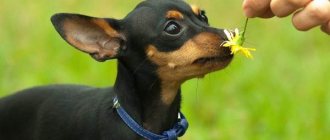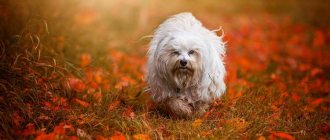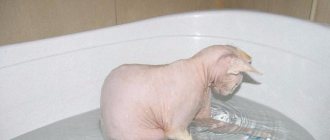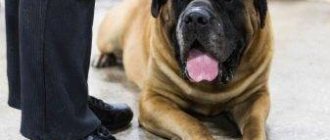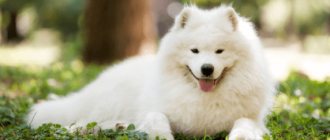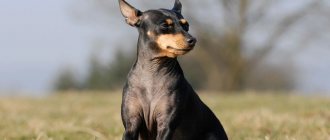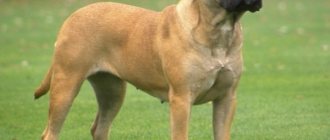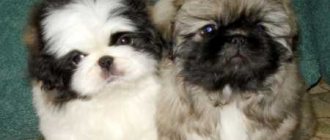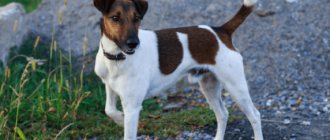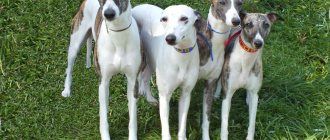Breed characteristics
| Short description | |
| Origin: | central Asia |
| Conditions of detention: | House with a garden, spacious house or apartment, aviary |
| Purpose: | Service dogs, working dogs, companion dogs, guard dogs |
| Color: | Different |
| Wool length: | Various |
| Adult dog size: | Height 62-65 cm, weight 40-90 kg |
| Average life expectancy: | 9-15 years |
| Walk: | Twice daily walk required |
| Physical activity needs: | High physical activity needs (regular or daily exercise for more than 3 hours per day) |
| Fédération Cynologique Internationale (FIC) classification: | Group 2: Pinschers and Schnauzers, Molossians, Mountain and Swiss Cattle Dogs; Section 2: Molossians |
| Puppy price: | From 20,000 to 160,000 rubles. The price depends on the specific breed. The most expensive is the Tibetan Mastiff |
Tibetan
Tibetan Mastiff (Tibetan Mastiff, Do-hi) - has a predominantly black coat color with red tan markings. Looks like a majestic huge lion or a proud fluffy bear. It is believed that the larger the Do-hi at the withers, the more valuable it is. However, the breed standard for the “Tibetan” remains almost the same as for the other representatives described above.
The character of the Tibetan Great Dane is very persistent, however, in the East there are many legends that this beast supposedly crushed many opponents, and alone. This is probably why Do-hee is an excellent watchdog. Moreover, he will never attack a stranger who does not have evil intentions. As the owners of Tibetan Great Danes say, their dogs can sense the bad intentions of a stranger at the subconscious level, and then the latter will definitely not be saved.
Did you know? $1,500,000 is the amount a Chinese coal magnate paid for a real purebred Tibetan mastiff puppy.
There are two varieties of Tibetan Great Danes: some are trained for subsequent show classes and in China are called Tsang-hi, and others are trained specifically for security work (in China these are called Do-hi). There are practically no differences between them, only Tsang-hi is bred specifically for show classes, and he has kindness and calmness at the genetic level. In addition, show-class dogs are expensive and rare, and therefore give their owner a special status.
The health of the Tibetan Dane is quite strong, and some representatives can live up to 15-17 years. There is a line of Tibetan mastiff that is called aboriginal. This line of dogs practically does not suffer from all sorts of diseases, in addition, the aboriginal line of mastiff lives on average about 16 years, while the average life expectancy of the English mastiff is only 11 years.
History of the origin of the species
The origin of Mastiffs is still very poorly understood and established . It is believed that the first similar dogs were the Molossian Great Danes, which appeared in Central Asia. Roman legionnaires found and spread dogs across the continent. After this, different peoples began to carry out breeding work in order to improve the desired qualities of their pets. For example, Dogues de Bordeaux were excellent gladiators and poisoning dogs.
It is worth noting that all Mastiffs were gladiators and participated in battles. They were also often used as baiting animals (they hunted lions, bears, tigers). Some even went to war and formed the first ranks of the Roman army.
Cumberland Sheepdog
The Cumberland Sheepdog is the closest relative of the Border Collie. This gorgeous Australian Shepherd was a real hard worker. Her half-meter height and relatively low weight allowed her to move calmly, lightning-fast and almost silently across the ground. A distinctive feature of the breed was dense black and white fur, a muscular body and ears that constantly fall on the front of the head. You can safely call this dog one of the most charming.
So that Saint Gregory does not punish. Sadness and work: what not to do on January 21
US scientists classified people according to their curiosity
What do you do at 109 years old? Zhenya Tsetskhladze takes care of a 2-year-old boy
At the beginning of the last century, the breed began to be called border collies, which probably caused its extinction. She was grouped with another breed.
Distinctive features
All representatives of the Molosser section have similar typical features: a large, heavy body, a wrinkled muzzle, a wide skull, well-developed muscles and strong bones. There are 8 main types of Mastiffs and many similar breeds belonging to this section and group. A separate standard has been compiled for each type, but several general characteristics are distinguished.
- The head is square in shape with a strong angular skull, pronounced brow ridges and cheekbones;
- The muzzle is of medium length or shortened, can be upturned, and is always abundantly surrounded by wrinkles. The lips are soft, often jagged.
- The body is strong, voluminous, harmonious. The top line is straight, the bottom line is tucked in, but not completely.
- The limbs are strong, smooth, parallel limbs with large rounded paws and arched toes.
Types of mastiffs with photos
English Mastiff
The largest of all representatives. His height is approximately 70-75 cm, and his weight is equal to 100 kg. Well built, muscular. The colors are different: peach, silver, beige. A distinctive feature is a black mask on the face and head. The coat is short.
Neapolitan Mastiff
The shoulder reaches 60-70 cm, weighs about 50 kg . The most graceful and majestic of the 8 representatives. Color: ash-black with a white spot on the chest. His muzzle is one of the most wrinkled of all Molossians.
Spanish Mastiff
A large representative, reaches 70-75 cm, weighs 80-85 kg. A characteristic difference is a short but thick coat like Alabai’s, and a skin dewlap on the neck. Color ranges from milky white to golden hazel.
Fila Brasileiro – Brazilian Mastiff
One of the best guards. It is distinguished by moderate aggressiveness and a fit, slender body. It is not as big as English or Spanish. Only 60 cm at the withers . Obedient, efficient, one of the few well-trained Molossians.
Bullmastiff
A wonderful pet. Small – 50-60 cm with a weight of 50-60 kg . Any color, characterized by a black mask, black spots on the ears and chest spots. Obtained as the result of a mating between a Bulldog and a Mastiff.
Dogue de Bordeaux
It also has a second name - French Mastiff . A distinctive feature is the only color - orange-red. This dog's muzzle is slightly upturned and has a characteristic black or red mask. In character he is no different from his brothers.
Japanese Great Danes (Tosa Inu)
The most original of the family is a rather stubborn breed. A distinctive feature is a small number of skin folds on the head and a narrow skull. Representatives are fit and slender. Miniature in weight (from 30 to 60 kg).
Tibetan mastiff
One of the most expensive breeds in the world. It has long, thick hair, thanks to which it can easily withstand frost. Considered the best dog of eastern origin.
Argentine White Mastiff
Another name for the dog is Dogo Argentino . Perfect for hunting and service. It has short snow-white fur, but slight darkening is allowed in the area of the ears and eyes.
Types of Mastiffs
The Mastiff family includes several varieties of dogs. Each of them has distinctive characteristics, despite the fact that they are the same breed. What types of mastiffs there are are described below.
Tibetan
This shaggy mastiff has a beautiful appearance. The dogs have long, thick hair and a powerful build. The head is proportional to the body, the nose is large, the eyes are almond-shaped.
The Tibetan Mountain Mastiff is a very good guard, has high intelligence, and can be stubborn, so training should begin at a young age.
Neapolitan (Neapolitan)
It is also called Italian and originates from Roman mastiffs.
A dog with blue, black or gray short hair and folds on the face. The body is slender, the limbs are straight, well developed, the tail resembles a saber.
For reference! Neapolitan dogs are friendly, great with children, black mastiff and gray (blue) mastiff are excellent guard dogs.
English (Scottish Mastiff)
This breed is considered a classic species, characterized by a large build and short hair. The muzzle is wide, the nose is large and black. Dogs are strong, independent, but at the same time they really need affection and care.
They are attached to their owner, treat children well, sometimes they show laziness, although in general the dogs are very active.
Spanish
Representatives of this species are distinguished by their coarse fur of a variety of colors. They have a thick skin that hangs in large folds on the neck, chest and abdomen.
Pets are very loyal and caring, but in some cases they can be stubborn, so raising puppies needs to be done from an early age.
Bullmastiff
This breed was developed by crossing bulldogs and mastiffs. Therefore, the dog turned out to be large, with a rather menacing appearance.
Smooth-haired European Mastiff, colors may vary. This is a wonderful breed that is loyal, not stubborn and trains well.
It is also worth noting that the dog is not as phlegmatic as other varieties.
Iberian
White mastiff with medium length coat. The color is light with dark marbled spots, and there is a rather pronounced mask on the face. The muzzle is large and wide. Dogs with good intelligence, very friendly and affectionate, are good with children.
Neapolitan impresses with its beautiful appearance
French (Bordeaux)
A strong and agile red mastiff, looks a little like a bulldog. The coat is short and there is a white spot on the chest. It is necessary to educate and socialize from an early age, although it has a calm character.
Japanese (Tosa Inu)
These are Japanese fighting dogs with a large body and a straight back. The head is wide and large, there is a fold on the neck.
For reference! The brown mastiff is distinguished by fearlessness and courage, very loyal, amenable to training, although not without stubbornness.
Brazilian (Fila Brazilero)
The yellow or brindle mastiff is distinguished by dewlap in the area of the neck and abdomen. The coat is short and smooth. Sometimes it shows stubbornness, but is considered the best guard variety. Devoted to the owner and his family.
Mayorsky (Ca de Bou)
Short-haired dogs with almond-shaped eyes and a narrowed muzzle. Very loyal and friendly.
All mastiff breeds are varied, so you can choose any variety you want.
Pyrenean dogs are not very similar to dogs from the mastiff family
Features of character and behavior
All Mastiffs are phlegmatic by nature. They are not particularly active, they like to spend time in the company of their owner. They are suitable as a family dog and pose a threat to children only due to their impressive size. In case of danger, they are able to protect both the territory and the person, but they simply do not show aggression.
Advantages
The advantages of the breed include:
- Calmness, poise;
- Family life, homeliness (they will never run away, they like to be on their territory near close people);
- Obedience;
- Good-natured and phlegmatic (they treat children and pets well);
- Good physical characteristics;
- Security instincts (able to protect against intruders).
Flaws
Mastiffs have few disadvantages, including:
- Stubbornness and a certain waywardness;
- Touchiness;
- Dogs require training;
- They may show dislike for male dogs;
- Loneliness and change of environment are difficult to bear;
- Slobbery;
- They snore.
All dogs are individual in temperament. It all depends on upbringing and breed line. Even the sweetest and kindest dog can become aggressive due to rough treatment.
Character
Neapolitan Mastiffs have been guard dogs and bodyguards since ancient Rome. It is difficult to expect from them the character of a shepherd dog. They are usually calm and confident, but in case of danger they can turn into a fearless defender in the blink of an eye.
They love their owners and are surprisingly gentle with those they trust. Puppies are trusting and sociable at first, but grow into more private dogs. Those who are distrustful of strangers are definitely not those who greet everyone they meet.
Socialization is critical for the Neapolitan Mastiff. Those who have not been socialized grow into aggressive dogs, biting more often than others. And their strength and size make bites a very serious matter. But remember that even ideal socialization cannot smooth out the thousand-year-old instinct.
Even the most trained mastino will attack strangers if they invade their territory while their owners are away from home. They can be kept in families with children, however, most experts do not recommend this. These massive dogs can hurt a child even while playing. In addition, noisy and whiny games of children are aggression for them and they can react accordingly.
Finally, no child can be as dominant as required for this breed. If you need a bodyguard or watchman, there are few breeds that can do it better than the Mastino. But, if you have not had a dog before, then choosing a Napoletano would be a mistake. They need a firm hand and a strong-willed owner.
It is not a good idea to keep them with other dogs. Most Neapolitan Mastiffs do not tolerate dogs of the same sex, and some do not tolerate dogs of the opposite sex. Some people get along with the dogs they grew up with, but others can't stand them either.
It is extremely difficult to reconcile them with adult dogs, especially since the most striking feature of the breed is jealousy. They are very jealous and show their jealousy through aggression. And any tension between a mastiff and another dog will end sadly. After all, there are not many breeds that can withstand a fight with them.
They can be accustomed to cats and other animals, since they do not have a pronounced hunting instinct. However, they need to be trained as early as possible, since their guarding instinct makes them view other people's animals as a threat. They will definitely pursue strangers on their territory, remember that even if they love a domestic cat, this love does not extend to the neighbor’s.
Neapolitan Mastiffs are very intelligent and understand commands well, and can be obedient in the hands of someone they respect. A calm, confident and experienced owner will be satisfied with the process and result of training. This dog does something not because it is ordered, but because it respects its owner. And this respect must be earned.
They are dominant and are capable of placing humans below them in the pack hierarchy if allowed to do so. The owner must regularly remind the dog who is who and put him in his place. If the Neapolitan Mastiff believes that he is alpha, he will become willful and get out of control. A general obedience course is highly recommended for this breed.
If they are not on duty, they are surprisingly calm and relaxed, lying on the couch and not thinking about additional stress. They would prefer not to move once again, but they still need regular, moderate exercise. If they don’t receive one, they may get bored.
A bored mastiff is a destructive, aggressive mastiff. But, activity and stress should be moderate, especially for Neapolitan Mastiff puppies. Puppies can develop musculoskeletal problems if the activity is excessive. In addition, for adult dogs it is contraindicated immediately after feeding, in order to avoid volvulus.
There are other nuances that are not related to character, but which the potential owner will have to face. First of all, they salivate and there is no other breed that salivates in the same amount. Threads of saliva flowing from the Mastino's mouth will be all over the house. Sometimes they shake their heads and then they can be found on the walls and ceiling.
Due to the structure of their skull, they are prone to gas and it is extremely unpleasant to be in the same room with a dog of this size who is experiencing flatulence. Proper feeding reduces it, but cannot completely eliminate it. If drooling and gas scare you or your family, then you should definitely look for another breed.
Care and maintenance
These dogs, although large, are unpretentious . They can get along in any territory and get used to any conditions. The most difficult to groom is the Tibetan Mastiff due to its long, thick mane. Other Mastiffs are short-haired. Such pets do not require much free space and can sleep on a bedding in the hallway. A special feature is not fussiness and unobtrusiveness. They will not interfere with their active games.
Street keeping of all (except Tibetan) dogs is possible only in warm climates. The animals are short-haired and can freeze. In winter, some are even dressed in protective overalls.
- Before buying a puppy, you need to make sure that the house is ready for the arrival of a new family member. The lounger should be installed in a place that is not subject to drafts. The height of the bowls is adjusted to the height of the pet. The number of toys depends on the dog's needs.
- Regarding eye care. Mastiffs are often prone to diseases in this particular area, so it is important to examine the mucous membranes daily and wipe them with chamomile decoction.
- The ears should also not be neglected; clean them as needed. You can purchase special chewing cords for your teeth, or you can wash your mouth with dog toothpastes yourself.
- Nails are rarely trimmed, only when absolutely necessary . Paws are wiped or washed after each walk. All dogs should be treated for fleas and ticks using solutions, shampoos and collars.
Nutrition
Mastiffs are large, strong dogs, but they do not need large amounts of food.
- Puppies are fed 5-6 times a day (up to 5 months);
- Adult pets are transferred to a one-time meal, usually in the evening. Usually 800 g of dry or natural food is enough for them.
- The best choice is dry grain-free food (holistic), which belongs to the highest class of products and is intended for active and large dogs.
Due to the fact that dogs came from wolves, they are predators and require a lot of meat: beef, rabbit, chicken. You can also give fermented milk products and boiled sea fish, after removing the bones. It is worthwhile to diversify their diet with various cereals, and this is also a fairly important component in their diet. It is allowed to give rice, oatmeal and buckwheat porridges boiled in milk, broth or water. You can add pieces of fruit or raw vegetables to them.
Prohibited products:
- Butter;
- Citrus;
- Onion garlic;
- Pork;
- Potatoes, melon and other starchy fruits and vegetables;
- Fried, salty, smoked, flour and sweet;
- Various bones.
You should not feed animals leftover food, as well as table scraps, as this can harm the pet. Maintaining proper nutrition will help your dog develop properly and maintain a strong immune system. Also, the mastiff should always have free access to clean drinking water.
Health
Most often, a pet's health depends on care and nutrition. Mastiffs are no exception. They have good natural immunity, but have several hereditary diseases and specific characteristics of the body. Life expectancy depends on the breed, on average from 9 to 15 years .
To avoid the early death of an animal, you need to regularly check it at a veterinary clinic, vaccinate it against viral diseases and follow all rules of care.
Vaccinations
At the age of 1.5 - 2 months, the Mastiff puppy should be vaccinated. Basically, this is done by nursery employees, but it should be understood that private individuals do not do this. All vaccinations are recorded in the pet's passport, along with the dates of vaccination procedures.
You should not delay vaccinating your puppy, since all dangerous diseases affect unvaccinated animals. But even a dog with all its vaccinations does not have complete protection, so it is worth keeping an eye on who your pet interacts with and what it eats or picks up on the street.
The first and most important vaccination occurs at the age of 2 months, after which the procedure should be repeated after 2 weeks, and then at 6 and 12 months. These vaccinations help develop immunity against diseases such as:
- Paravirus;
- Enteritis;
- Hepatitis;
- Leptospirosis;
- Salmonella;
- Parainfluenza;
- Flesh-eating distemper.
The next vaccination is carried out in the 7th month , this is the rabies vaccine. If the dog is without this vaccination, it will not be possible to take it abroad. The procedure should be updated annually, since immunity is developed over a certain period of time.
It should be noted that sometimes outbreaks of certain diseases occur, then it is worth urgently re-vaccinating.
Diseases
Like all large breeds, Mastiffs often develop musculoskeletal diseases. The most common disease is hip dysplasia. It manifests itself at about 2-4 years: the pet limps, whines when jumping, and its paws become deformed. This happens due to heavy loads on the limbs (too intense training, excess weight). The disease cannot be completely cured, but you can make your dog’s life easier through surgery or medication.
Another problem for Mastiffs is sensitive eyes . Dogs of this breed are diagnosed with cataracts, glaucoma, and cherry eye. In addition, there is a hereditary disease PRA, which can be detected even in a puppy using a DNA test. The disease leads to blindness, so it is better not to get a dog with a positive PRA test.
Digestive problems occur due to poor nutrition. To avoid bloating, constipation, diarrhea and allergies, you need to carefully adjust your diet.
Walk
- Mastiffs are not apartment dogs, although they can adapt to a small area. Most often they are kept free-range in the local area. Such dogs are often lazy, they do not need active physical activity, but walking for 1.5-2 hours a day is worth ensuring that the dog does not gain excess weight.
- Walking puppies begins at 2-3 months, gradually accustoming them to the outdoor toilet and regularly leaving the house. A leash is required, this breed is quite large and can harm a person even without intentionally. Some individuals are not averse to getting into a city pond, but this should not be prohibited.
Grooming
Mastiffs have different coats, so their care will be different.
- These dogs are generally short-haired and do not require brushing or frequent bathing.
- Only the Tibetan Mastiff is covered with thick, long hair that needs to be brushed at least 3 times a week. In addition, he is cut for the summer. This dog sheds only once a year.
Talbot
Many experts are confident that this dog is the ancestor of the modern beagle and bloodhound. Talbot was an indispensable hunting dog, a popular sight in England during the Middle Ages. It is unclear whether this breed was bred as a greyhound or if they were used for digging up prey.
How to Wear a Padded Jacket or Chunky Puffer Jacket and Look Effortlessly Cool
Nissan Z Proto Unveils 400Z Twin-Turbo V6
TikTok followers support Scottish postman's song about sailors
This breed has been illustrated in art. Dogs were depicted as either small or medium-sized, with white fur, huge, powerful paws, a thin waist, long drooping ears and a long curled tail. Talbot lived until the end of the eighteenth century.
Mating
Depending on the pedigree of the dog, mating can be either regular or breeding. If pedigree documents have been created for animals, then mating must be carried out on an official basis. The girl's owners must request a special certificate from the nursery and find a mating cable. The time and date of mating should be discussed in advance.
Mating is carried out only after the female mastiff reaches the age of 2 years.
- At 8-10 months, the first heat will begin, but at this period she is too weak to bear puppies. The process itself should be planned for the 15th day of the third heat period, when the girl begins to have light and bloody discharge and the loop swells.
- Mating this breed requires a lot of space, so the space where the process will take place should be prepared in advance. To get to know each other, you can take your pets out for a walk together so that they can get to know each other and sniff each other.
- When the mastiff boy mounts, you should help the animals continue mating.
- The girl is supported under the stomach and by the head, and the cable is directed into the loop. This is done to ensure that the animals are not injured in the process.
- The lock together with sexual intercourse lasts about 20 minutes .
- The next mating should be repeated after 2 days .
Key points in training
Mastiffs are dogs with high self-esteem, rarely trained well, although they have all the necessary qualities. Usually these dogs are not trained specifically, but they need to be educated. It is worth considering that such pets cannot be scolded or insulted. It is better to maintain friendly, equal relationships, without trying to dominate the dog.
When a puppy appears in the house, it is important not to miss the moment and prohibit damaging furniture, going to the toilet in the wrong places and sleeping on the owner’s bed. The child must still understand that the person is higher on the hierarchical ladder. By 4 months, the dog will have learned its name, feeding and walking routine.
Read about how to properly train a dog in the article: “Training a puppy: effective methods from dog handlers, learning commands at home.”
How to choose a puppy
When buying a puppy, you should approach it responsibly and think through many details in advance. Choose the gender of the puppy, as the pet’s character will depend on this. It should be understood that females are more balanced and obedient, while Mastiff boys are stronger and excellent for service. It is also worth deciding on the subspecies and class of Mastiff. The show class is suitable for exhibitions, the breed class is suitable for breeding and service, and the pet class will make a good pet.
Only official nurseries can provide healthy and balanced puppies. At the same time, it is worth considering that buying from private individuals will be much cheaper. When purchasing from officials, they will provide a veterinary passport and pedigree of the puppy.
Small Mastiffs should be playful and clean. They must meet standards and have no defects. The price will depend on the subspecies and Mastiff breed itself, pedigree and class . The cost of puppies without a pedigree is from 15,000 to 22,000 rubles, but show classes will cost from 90,000 rubles . Tibetan Mastiffs are considered the most expensive.
Mastiffs are large, heavy dogs and are ideal as guard dogs. But besides this, they will also become the best friends for children and the whole family.
Contents of Mastino Neapolitan
The main condition for keeping a mastiff is to provide the pet with regular and sufficiently intense physical activity . Therefore, such a dog requires regular and long walks. It is quite possible to keep representatives of such an ancient breed in apartment conditions, but quite problematic. Neapolitan Mastiffs require space and a significant area.
This is interesting! The best option for keeping such a pet would be a country home, where the mastiff will be a reliable and very devoted guard.
It should be noted that for Mastino Neapolitan it is important to have a specific owner. A dog with well-developed attention and observation skills prefers to earn the owner's approval by any means necessary. A distinctive breed feature of the mastiff is very strong suspicion, so this pet treats strangers with some caution.
Care and hygiene
Neapolitan Mastiffs are prone to overheating in very hot weather, and such a dog can get heatstroke even in the absence of direct contact with direct sunlight. Given its large dimensions, a pet simply does not have time to cool itself down on its own, so walks should be rescheduled to the early morning hours or late evening.
Mastiff coat care involves regular brushing and systematic combing. The shedding period for a pet of this breed lasts about a couple of weeks, during which brushing is carried out daily. Water procedures are appropriate only during the season, when the wool is heavily soiled, and also immediately before exhibitions. The rather delicate skin of such a dog does not have high-quality protection in the form of undercoat, so frequent bathing can cause dandruff in the pet, as well as itching and severe irritation.
The dog's eyes and ears need monitoring and regular cleaning, which is carried out a couple of times a week. As a rule, claws can wear down naturally with sufficient walking. Otherwise, the overgrown nails are systematically shortened using a guillotine nail cutter designed for large dogs. Teeth should also be regularly examined for plaque and tartar. Special pastes and brushes are used for cleaning.
It should be noted that the Neapolitan Mastiff belongs to the category of non-dog-smelling, but extremely slobbery breeds, so regular wiping of the folds on the face is mandatory. Failure to comply with this rule and constantly getting wet wrinkles cause the spread of various skin infections. Among other things, such a pet is not able to control the process of salivation, as a result of which pieces of furniture and clothing of household members or guests often become unusable.
What to feed a mastiff
Even before purchasing a puppy of this breed, the dog breeder needs to purchase not only all the necessary accessories and prepare the place, but also decide on the method of feeding the pet. Between the ages of two and four months, a Neapolitan Mastiff puppy needs to be fed at least four times a day.
It is very important to remember that after the puppy’s baby teeth appear, it is very important to provide the pet with proper supplementary nutrition. It is quite possible to give your puppy special milk formulas, the composition of which is as close as possible to mother’s milk. If necessary, the composition is supplemented with a certain amount of homogenizer.
It is enough to feed an adult large dog only once, and best in the evening . The diet of such a dog must be very varied, and special attention must be paid to products that are sufficiently enriched with protein components. Additionally, you need to give your pet vitamin complexes, this is especially important with the onset of spring.
This is interesting! Zoological stores today offer a wide range of various balanced industrial high-quality food, which contains a sufficient amount of all the substances necessary for a dog.
Neapolitan Mastiffs have a very well-developed gastrointestinal tract, so disruptions in the digestive system occur very rarely. However, the nutrition of such a pet must be not only balanced, but also correct. It is very important to completely exclude chicken bones and rice from the diet, which is due to the fairly rapid metabolic processes occurring in the Mastino’s body.
Feeding your dog should be done at the same hours every day. Your pet should always have a bowl filled with fresh water in sufficient quantities freely available. It is important to remember that it is optimal to feed Neapolitan Mastino with complete and high-quality dry diets, which are enriched with all necessary microelements.
The best foods for feeding a large dog are Innova Dog, Eagle Pask Nolistic Select® Lamb Meal & Rice and CANIDАE® All Life Stage. As a supplement you can use “Canvit Chondro-Maxi” or “Artrofit”.

